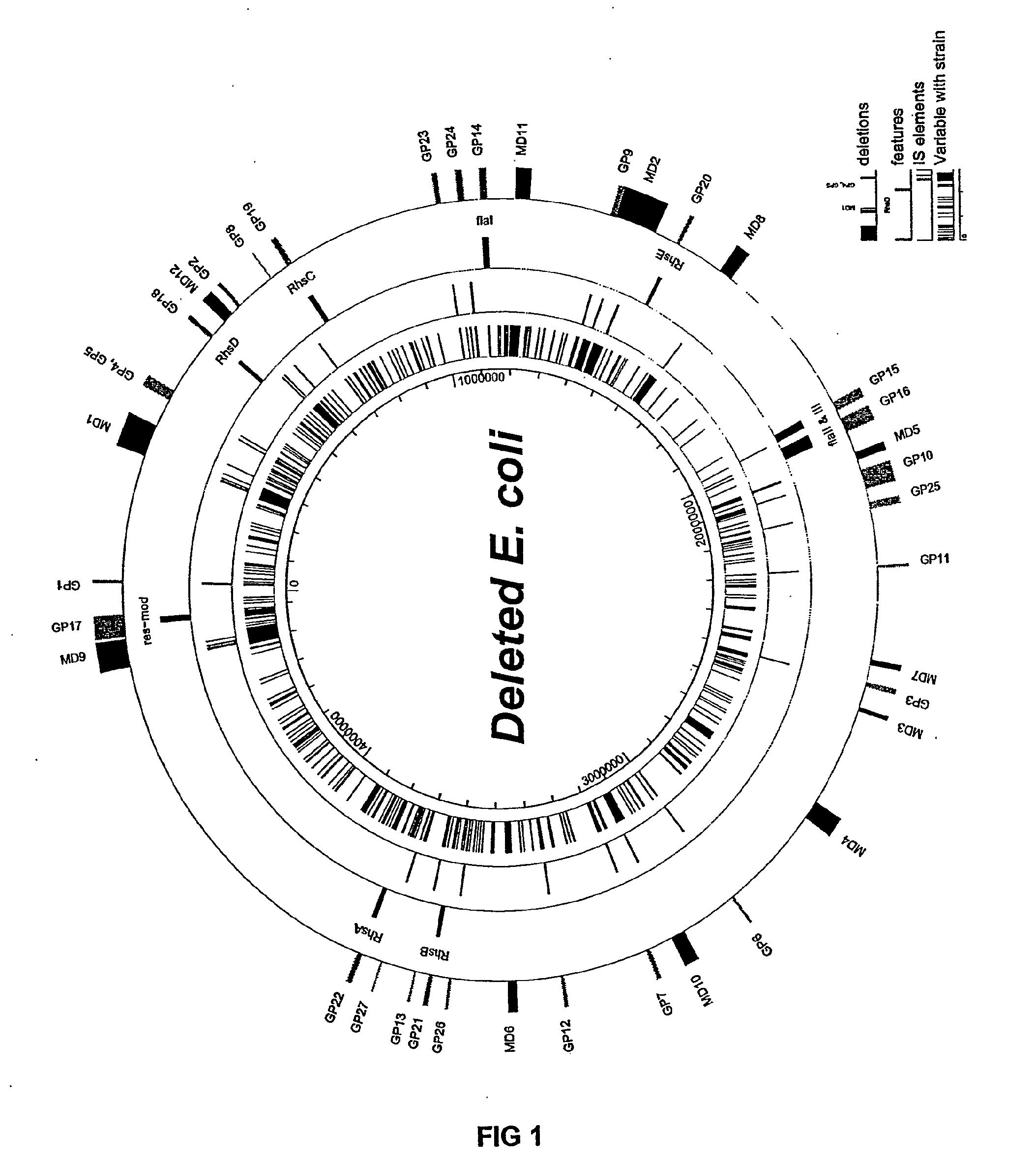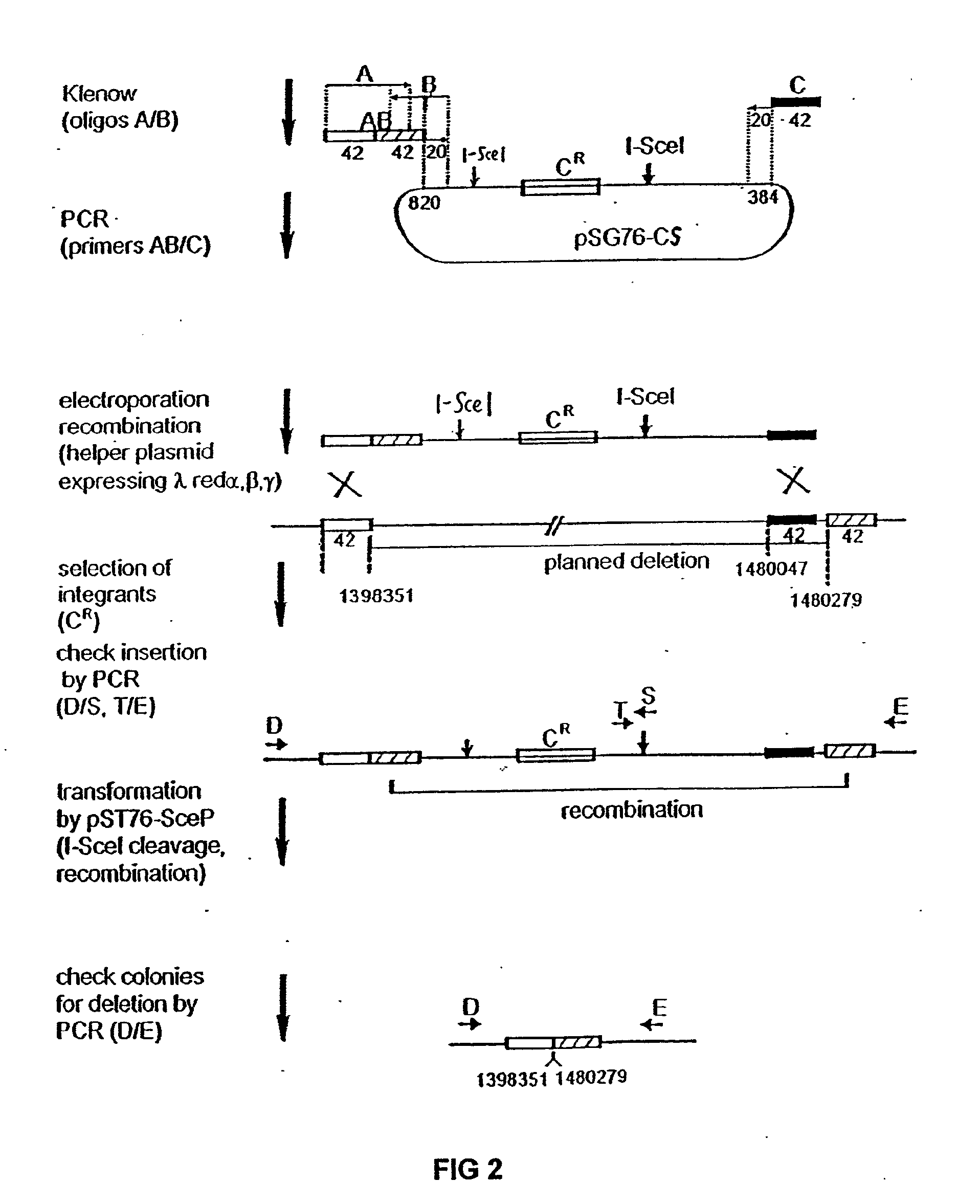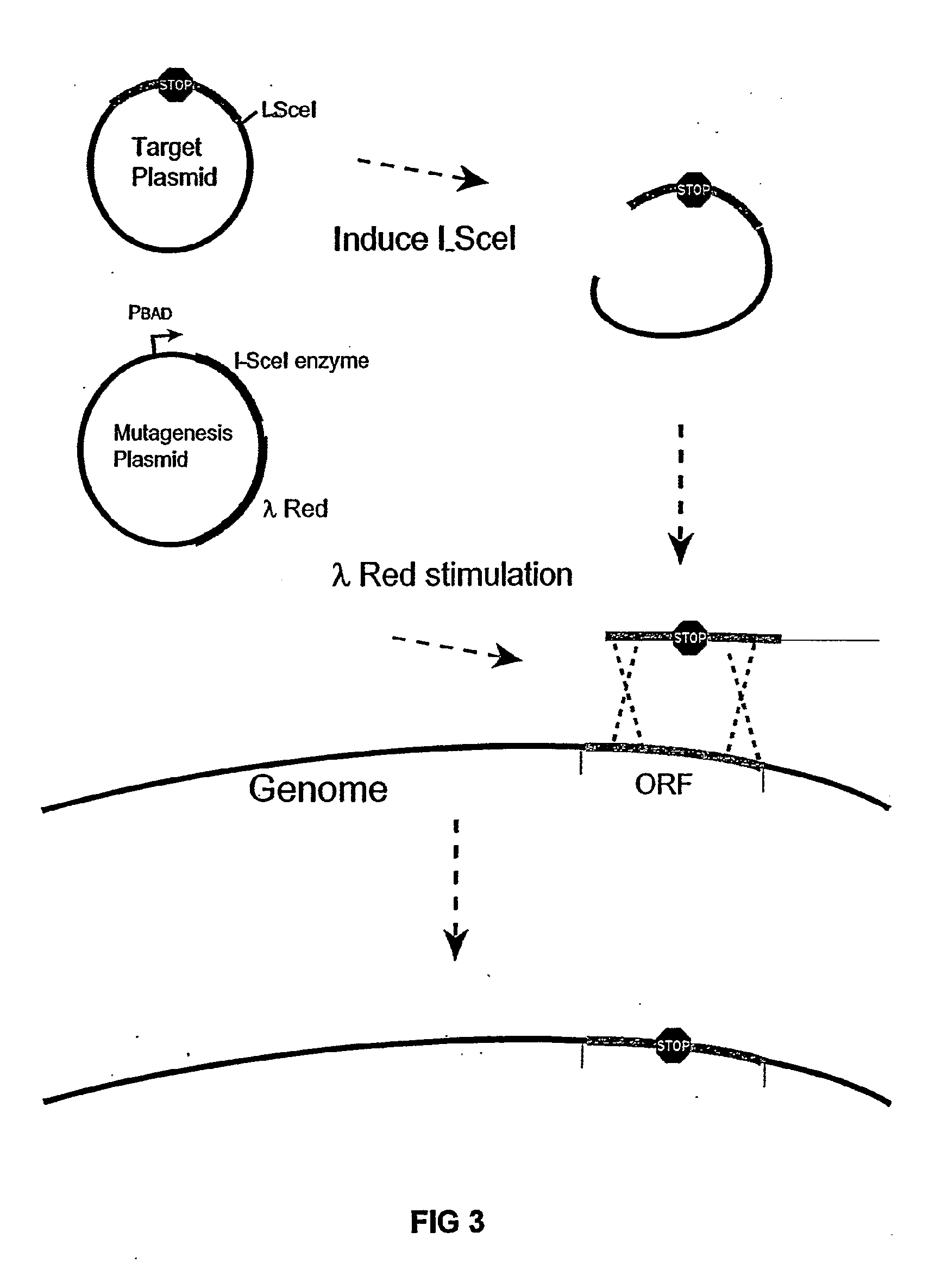Insertion Sequence-Free Bacteria
a technology of insertion sequence and bacteria, which is applied in the field of insertion sequence-free bacteria, can solve the problems of affecting the production or purification of desired protein products from engineered bacteria, certain normal i>e. coli /i>gene products can interfere with the introduction and maintenance of plasmid dna, and the cost of purification of a recombinant protein, etc., and achieves the effect of reducing the genome of an organism
- Summary
- Abstract
- Description
- Claims
- Application Information
AI Technical Summary
Benefits of technology
Problems solved by technology
Method used
Image
Examples
examples
Plasmids
[0117] The plasmid used for PCR construction of the artificial inserted DNA sequence was designated pSG76-CS (GenBank Accession No. AF402780), which was derived from pSG76-C (Posfai, G. et al., J. Bacteriol. 179: 4426-4428 (1997)) by inserting a second I-SceI site. The second I-SceI site was obtained by the PCR-mediated insertion of a second I-SceI recognition site into pSG76-C, downstream of the NotI site. The two I-SceI sites are in opposite direction.
[0118] The pBADαβγ plasmid was used for enhancing recombination of linear DNA-fragments into the genome. This plasmid was described in Muyrers, J. P. P. et al., Nucl. Acids Res. 27:1555-1557 (1999).
[0119] The PKSUC1 plasmid (GenBank Accession No. AF402779), for expressing I-SceI, was derived from pSG76-K (Posfai, G. et al., J. Bacteriol. 179: 4426-4428 (1997)) and pUC19RP12 (Posfai, G. et al., Nucl. Acids Res. 27: 4409-4415 (1999)). The XbaI-NotI fragment (carries the Kan gene; the NotI end was blunted by Klenow polymeras...
PUM
| Property | Measurement | Unit |
|---|---|---|
| volume | aaaaa | aaaaa |
| volume | aaaaa | aaaaa |
| volume | aaaaa | aaaaa |
Abstract
Description
Claims
Application Information
 Login to View More
Login to View More - R&D
- Intellectual Property
- Life Sciences
- Materials
- Tech Scout
- Unparalleled Data Quality
- Higher Quality Content
- 60% Fewer Hallucinations
Browse by: Latest US Patents, China's latest patents, Technical Efficacy Thesaurus, Application Domain, Technology Topic, Popular Technical Reports.
© 2025 PatSnap. All rights reserved.Legal|Privacy policy|Modern Slavery Act Transparency Statement|Sitemap|About US| Contact US: help@patsnap.com



